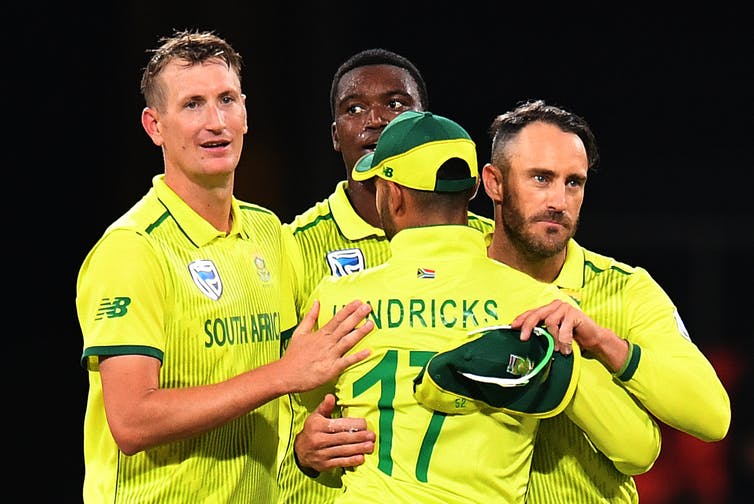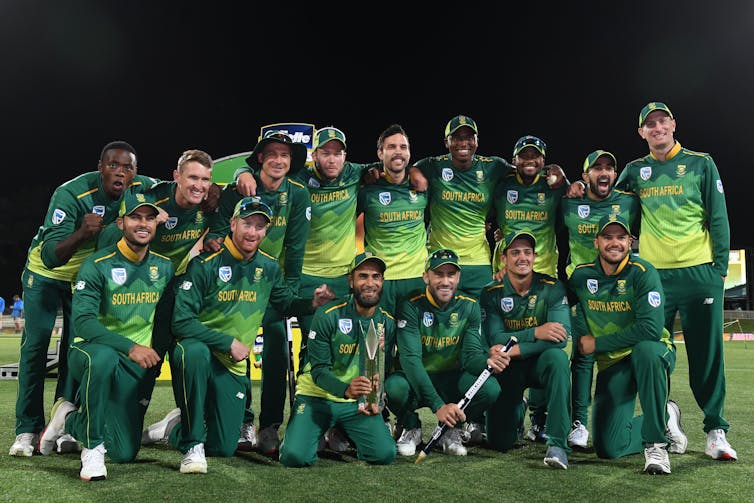
What South Africa’s Top Cricketers Have to Say About Quotas
Racial quotas in South African sport have been an emotive debate for the past 20 years. The arguments for and against are usually based on limited, subjective evidence. And the voices of the players affected by quotas are rarely considered. As part of my PhD I conducted research to find out what sports people themselves […]

Racial quotas in South African sport have been an emotive debate for the past 20 years. The arguments for and against are usually based on limited, subjective evidence. And the voices of the players affected by quotas are rarely considered.

As part of my PhD I conducted research to find out what sports people themselves think and feel about this contentious and complex issue. I explored the opinions of 43 South African professional cricketers and 16 coaches and administrators from all ethnic groups regarding quotas.
Quotas, or as some administrators prefer, “targets”, for selection of black players have been part of South African cricket since 1999.
Six years ago, under pressure from the government, Cricket South Africa introduced quotas specifically for “black African” players at the senior provincial and professional level. This required having a minimum of one black African and five black cricketers in the teams for every match and this number increased to three black Africans and six black players by October 2015.
Initially the national team was excluded from quotas but in 2016 a selection target of 54% black, of which 18% should be black African, players on average across an entire season was announced. These numbers remain the requirements.
Cricket was the first sport to be as prescriptive as this. South African rugby had an agreement with the government that half the players at the 2019 Rugby World Cup should be black.
My research was conducted during the third season that the quotas had been in place. My overarching finding was that the people I interviewed thought that quotas alone were not an effective, sustainable intervention for developing cricket talent in a diverse society undergoing transition.

My study concurs with previous findings that the transformation of cricket is both complex and multifaceted. To ensure long-term sustainability it therefore requires more than a one-dimensional approach such as quotas.
Differing views
A number of the people I interviewed thought that they had been disadvantaged by the quota system. For example, some black players highlighted the negative psychological impact they experienced because they were viewed as “quota” players irrespective of ability. They said this affected their ability to develop expertise and to perform.
As one former national player put it:
It’s like all these people saying you not good enough we dropping you, you always take the fall. So mentally that is a lot to take in and it breaks you down you know.
And former South African opening bowler Makhaya Ntini has been quoted as saying:
Nobody would be happy if they thought they were picked because of their colour.
However, a number of people I spoke to were in favour of using quotas to change the ethnic dynamics of South African cricket.
Some argued that the major benefit was to increase access to opportunities for those previously excluded by law, outdated mindsets, prejudices, socio-economic and educational circumstances or a lack of resolve on the part of coaches, administrators and society.
As one player put it, “I think it was a great initiative, giving the opportunities to the African/black players.”
This need for opportunities has been echoed in the past few weeks by none other than 2019 Rugby World Cup winning captain Siya Kolisi.
On the Springbok team’s nationwide tour to show off the World Cup, the star player spoke of the opportunities he and other players had been given to play. He encouraged young players to continue to dream and believe in themselves so that they would be ready when opportunities arose.
But most players argued that the quota system provided only a short-term solution. To quote one black African cricket participant:
It will provide you short-term solutions in a sense that in a team you will see three black African cricketers and that all looks good, but whether you are developing them for the next five or ten years; I don’t think it’s the most effective solution.

Solutions
A report on racial transformation in South African sport in 2013 found that over-simplistic, quick fixes aimed at one-dimensional, demographically based processes ignored the need for a multi-dimensional approach to transformation.
Cricket South Africa has recognised this too, arguing that the need to address transformation throughout the system requires dynamic interventions as well as “deep-seated” changes in the mindsets of all stakeholders.
Developing talent at grassroots level is another area of agreement. The lack of long-term player development from grassroots to senior levels has resulted in a dearth of sufficiently technically and tactically experienced black African professional cricketers.
Contributing factors include a lack of quality coaching, a lack of access to facilities and equipment, insufficient player management as well as a lack of understanding of individual player circumstances and needs.
As one participant commented: “Quotas allow administrators to avoid doing proper development.”
Some participants also argued that the majority of coaches didn’t have the intrapersonal and interpersonal skills to manage changing team dynamics.

Lessons for other sports
My research shows that the very narrow focus of quotas and targets won’t address the multidimensional nature of talent development. It’s true that targets provide access to opportunities that might not have been provided otherwise. Nevertheless, quotas have a limited impact on the development of players’ expertise.
Although Cricket South Africa has introduced some complementary interventions to provide additional support to players, quotas don’t address the wider socio-economic inequities that continue to plague South Africa. Relevant inequities include high levels of poverty among black South Africans, poor schooling and limited sporting facilities for many children.
Furthermore, differing family structures, for example a high number of single-parent families, make it more difficult for some parents to support players financially and logistically in pursuing their sporting dreams.
And gangsterism, HIV/AIDS, widespread rape and murder, and unsafe living environments in many black communities were highlighted by people interviewed as contributing to the barriers faced by youngsters growing up in these areas.
To achieve lasting sporting transformation, there needs to be integrated interventions at multiple levels of society by all stakeholders working together. This includes government, communities, sporting organisations, schools, clubs, families, teams, coaches and players.![]()
Mary Ann Dove, Honorary Researcher, University of Cape Town
This article is republished from The Conversation under a Creative Commons license. Read the original article.
